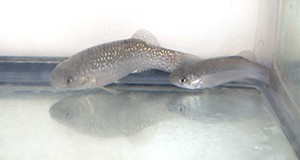Aquaculturists worldwide use artificial or induced spawning of fish to maximize egg and larval production from fish that cannot normally be bred in captivity. Despite the wide global use of this technique, and much literature published, the success rates of induced spawning are consistently variable. One often overlooked reason for the variable success rates is that successful rates of fertilization, hatching, and larval survival are most dependent on high-quality sperm and the surrounding fluid that supports sperm function. It is difficult to obtain consistent, good-quality spermiations (releases of spermatozoa); to keep sperm alive after collection and during storage and transport; and to freeze large volumes of semen at one time. Therefore, a successful fish breeding program requiring sperm begins with a source of high-quality semen, and its proper collection, handling, and storage. This three-page article written by Frank A. Chapman and published by the Program in Fisheries and Aquatic Sciences in the School of Forest Resources and Conservation describes how to make and use a semen extender that will maximize the volume and preserve the viability of obtained semen.
http://edis.ifas.ufl.edu/fa193
